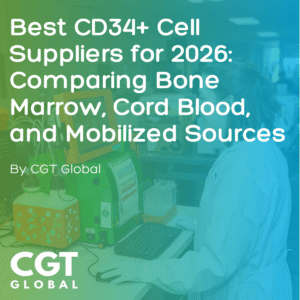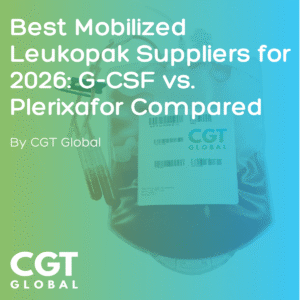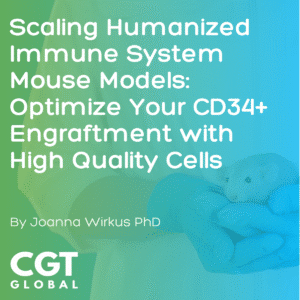- Neurological disorders are now the leading cause of disability worldwide.
- Alzheimer’s disease (AD) affects more than 55 million people globally—a number projected to triple by 2050.
- The disease is complex, involving Aβ plaques, tau tangles, chronic inflammation, and neuronal loss, yet approved treatments remain limited.

Cell & Gene Therapy Is Shifting the Paradigm
Recent CGT innovations are upending traditional models and opening new paths to treat or even reverse Alzheimer’s progression:
1. AAV-Based Gene Therapy (LX1001)
- Lexeo’s LX1001 delivers APOE2 via AAVrh10 into the CNS of APOE4-homozygous patients—who are at up to a 15× higher risk of late-onset AD compared to APOE3 carriers.
- Phase I/II 52-week interim data (CTAD 2024) showed:
- Safety, tolerability, and absence of amyloid-related imaging abnormalities
- Dose- and time-dependent APOE2 expression in CSF, with reductions in total tau and phosphorylated tau biomarkers in most participants.
2. CRISPR-Engineered Microglia
- Human-induced pluripotent stem cell (iPSC)-derived microglia have been genetically modified to secrete neprilysin, an enzyme that degrades amyloid-beta, in preclinical models. These findings were published in Cell Stem Cell June 5th, 2025.
- Separately, UCIrvine researchers developed “living couriers”—iPSC-derived microglia engineered to sense amyloid plaques and release therapeutic payloads, reducing inflammation, and preserving synaptic connections in mice.
3. Behavior-Reprogramming Gene Therapy (UC San Diego)
- Preserved memory function in symptomatic Alzheimer’s mouse models, specifically protecting hippocampal-dependent learning and recall
- Restored gene expression patterns in diseased neurons to resemble those of healthy age-matched controls, suggesting reversal of disease-associated changes
- Reprogrammed cellular behavior, influencing brain cells at the molecular level rather than targeting protein aggregates—offering a potentially disease-modifying approach

4. Stem Cells & MSC Therapies
- LomecelB, a mesenchymal stem cell (MSC) therapy from Longeveron, showed safety and slowed progression in a Phase IIa trial—garnering FDA’s Regenerative Medicine Advanced Therapy designation.
- MSCs can cross the blood-brain barrier and modulate inflammation—suggesting a broader therapeutic potential for AD and other chronic conditions.
5. iPSC TriCulture Models for Neuroinflammation
- Advanced human iPSCderived models now include neurons, astrocytes, and microglia in a tri-culture system—recapitulating Aβ plaques, tau pathology, synapse loss, and neuroinflammation.
- These platforms enable more accurate drug screening and mechanistic studies than prior models.
6. Targeting GlialMediated Inflammation
- Engineered peptides targeting glucagon-like peptide1 receptors (GLP1R) on microglia have reduced reactive astrocyte activation and preserved neurons in mouse models
Why This Matters for CGT & You
- Single administration potency: AAV therapies like LX1001 promise durable, one-time gene correction rather than lifelong dosing.
- Precision glial modulation: CRISPRengineered microglia and GLP1R agonists enable targeted control of neuroinflammation—potentially slowing disease progression.
- Human-relevant models: iPSC tri-culture and 3D microfluidic systems accelerate translational research while reducing reliance on animal models.

The Road Ahead
- Clinical timelines: LX1001 next-phase data expected late 2025; ongoing mini- and mid-stage trials in MSC and microglia therapies are underway iadrp.nia.nih.gov+8biospace.com+8cgtlive.com+8pmc.ncbi.nlm.nih.govlexeotx.com.
- Scalability challenges: Manufacturing CNS-targeted AAV and cell-based therapies at scale remains a critical bottleneck.
- Personalized strategies: With 40–50% of AD patients carrying one or more APOE4 alleles, genotype-driven approaches may redefine patient stratification.
Final Word
The convergence of CGT technologies—AAV vectors, CRISPR, iPSC, and MSCs—is starting to rewrite the story of Alzheimer’s disease. What was once the next frontier may soon be foundational in drug discovery and clinical therapy.
As Alzheimer’s & Brain Awareness Month unfolds, we celebrate not just awareness, but determination—the relentless innovation moving us closer to effective, durable treatments.






